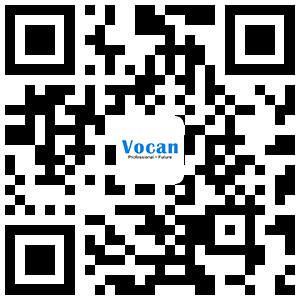What are the technical indicators of crystal vibration?
1, total frequency difference: the maximum frequency difference between the frequency of the crystal oscillator and the given nominal frequency due to the prescribed work and the total combination of non working parameters within a specified time. Crystal oscillator
The total frequency difference includes the maximum frequency difference caused by the frequency temperature stability, the frequency temperature accuracy, the frequency aging rate, the frequency power supply voltage stability and the frequency load stability. Generally, it is only concerned with short term frequency stability, but is not strictly required for other frequency stability indices. For example, a precision guided radar. Crystal oscillator
2. Frequency temperature stability: under the nominal power and load, the maximum allowable frequency deviation is not taken with the implied reference temperature or the implied reference temperature within the specified temperature range. Crystal oscillator
FT= + (fmax-fmin) / (fmax+fmin)
FTref= + MAX[| (fmax-fref) /fref|, fmin-fref (/fref|]
FT: frequency temperature stability (without implicit reference temperature)
FTref: frequency temperature stability (with implicit reference temperature)
Fmax: the highest frequency
specified in the temperature range.
Fmin: the lowest frequency
specified in the temperature range.
Fref: the frequency
the reference temperature is measured.
Note: the crystal oscillator with fTref index is more difficult to produce than the crystal oscillator with fT index, so the fTref oscillator has higher price. Crystal oscillator
3, frequency stable preheating time: the output time of the crystal oscillator is based on the stable output frequency, from the power to the output frequency less than the required frequency.
Explanation: in most applications, the crystal oscillator is a long-term power supply, but in some applications the crystal oscillator needs to start and turn off frequently. The frequency stability preheating time index needs to be considered (especially for the military communication radio used in harsh environments, when the frequency temperature stability is less than + 0.3ppm). (-45 to 85 degrees C), using OCXO as the local oscillator, the frequency stabilization and preheating time will be no less than 5 minutes, while the use of DTCXO will only take more than ten seconds. Crystal oscillator
4, frequency aging rate: the relationship between oscillator frequency and time under constant ambient conditions. This long-term frequency shift is caused by slow changes in crystal elements and oscillator circuit elements, which can be represented by the maximum rate of change after a specified time limit (such as + 10ppb/ days, 72 hours of power addition), or the maximum total frequency change within the specified time limit (such as: + 1ppm/ (first year) and + 5ppm/ (ten years)). Crystal oscillator
The frequency aging rate of TCXO is: + 0.2ppm ~ + + 2ppm (first year) and + 1ppm ~ + 5ppm (ten years). (except for special cases, TCXO seldom adopts the index of daily frequency aging, because even under the condition of the laboratory, the frequency change caused by temperature change will greatly exceed the frequency of temperature compensated crystal oscillator. Rate of aging, so this indicator has lost its practical significance. The frequency aging rate of OCXO is: + 0.5ppb ~ + 10ppb/ days (72 hours after power up), + 30ppb ~ + 2ppm (first year), + 0.3ppm ~ + 3ppm (ten years). Crystal oscillator
5. Frequency voltage control range: the frequency control voltage is transferred from the reference voltage to the specified terminal voltage, and the minimum peak value of the crystal oscillator frequency is changed.
The reference voltage is +2.5V, the prescribed terminal voltage is +0.5V and +4.5V. The frequency change amount of the voltage controlled crystal oscillator at +0.5V frequency control voltage is -110ppm, and the frequency change amount is +130ppm when the +4.5V frequency control voltage is controlled, then the voltage control range of VCXO voltage control is equal to + 100ppm (2.5V + 2V). Crystal oscillator
6, voltage control frequency response range: when the modulation frequency changes, the relationship between peak frequency offset and modulation frequency. It is usually indicated that the specified modulation frequency is lower than the prescribed modulation reference frequency by a number of dB. Crystal oscillator
Description: VCXO frequency voltage control range frequency response is 0 ~ 10kHz.
7. Frequency voltage control linear: a measure of the output frequency - input control voltage transmission characteristic compared with the ideal (straight line) function, which represents the permissible nonlinearity of the whole range frequency offset with a percentage. Crystal oscillator
Description: typical VCXO frequency voltage control is less than or equal to 10%, or less than 20%. The simple VCXO frequency voltage control linear calculation method (when the frequency voltage control polarity is positive): crystal oscillator
The frequency voltage control is linear = + ((fmax-fmin) /f0) * 100%
Fmax:VCXO output frequency
at maximum voltage control voltage.
Fmin:VCXO output frequency
at minimum voltage control voltage.
F0: voltage control center voltage frequency
8, single sideband phase noise (f): deviation from carrier F, the ratio of the power density of a phase modulation sideband to carrier power. Crystal oscillator


 WeChat public number
WeChat public number
 Mobile web site
Mobile web site